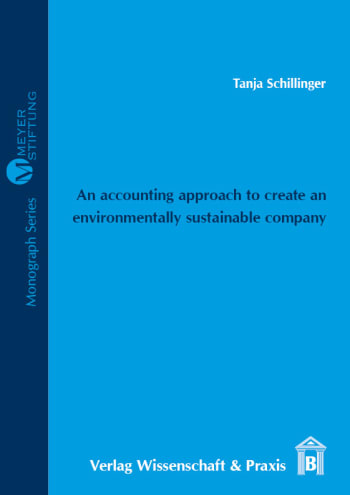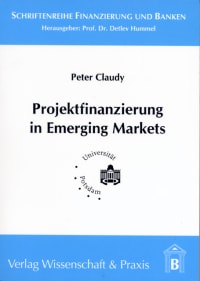Selection and Definition of Environmental Indicators with special reference to Suppliers in Developing Countries
Beschreibung
Environmental issues have become ubiquitous, and so has the term sustainability. A plethora of policies, companies, customers, investors, NGOs, and societies discuss sustainability; but talking and acting are two entirely different realms. The corporate sector, as one of the main polluters, bears a special responsibility to behave and act sustainably. Many companies state that they care about sustainability. However, sustainability is often not actually implemented into the company’s culture and actions, but may represent a tool for looking good to the outside.
In order to truly ingrain sustainability, there is a need to have specific internal instruments that track the firm’s environmental performance. This is where indicators come into the picture – more precisely environmental indicators. These are useful tools which may be applied by the accounting function in a firm in order to track its environmental performance and to support the decision-making of the management. However, in order to be useful they first have to be accepted and implemented, and unfortunately up until now, environmental accounting still seems to be rather an unpopular outsider in accounting.
To support the development towards the implementation of environmental aspects into accounting, this bachelor dissertation seeks to provide practical advice for German companies by selecting and defining a set of environmental indicators. The aim is to provide applicable and well-defined environmental indicators that address the most important global environmental issues, and that are assigned to the different value chain stages of a firm and beyond. This will be achieved, by also assigning indicators to the firm’s suppliers, especially those suppliers from developing countries as they have become increasingly important to the supply chain, as well as offering corporate environmental indicators. This set of indicators will be summarized in the socalled ›Environmental Tree-Model‹ being proposed by the author.
Inhaltsübersicht
1 Introduction
Problem Definition and Purpose – Delimitation and Research Approach
2 Sustainability
Definition and Differentiation – State of Corporate Sustainability – Shareholder Value vs Stakeholder Approach – Triple-Bottom-Line – Benefits
3 Status quo in Developing Countries
(Environmental) Sustainability Awareness – (Environmental) Sustainable Practices – Important Considerations for the Control of DC Suppliers
4 Issues Caused by Unsustainable Behaviour and Unsustainable Business Practices
Underlying Thoughts – Environmental Issues – Drivers and Economic Issues – Other Issues
5 Introduction to Environmental Accounting and Indicators
Conventional (Management) Accounting – Environmental (Management) Accounting – Environmental Performance Evaluation: ISO 14031 – Towards Environmental Indicators
6 Definition of the Selected Environmental Indicators along the Whole Value Chain
Environmental Supply Chain Management and Life Cycle Assessment – Porter’s Value Chain and its Adaptation – Structure and Categorization – Specific Divisional Environmental Indicators – Corporate Environmental Indicators (KEIs) – Overall Environmental Indicator
7 Integration of Indicators into an Exemplary Framework for Implementation and Application: The ›Environmental Tree-Model‹
Conclusion – Critical Evaluation and Limitations – Opportunities and Outlook
Appendices
References
Alphabetical Index
Bücher aus denselben Fachgebieten
Kontakt
-
+49 30 / 79 00 06 - 0
-
Bestellinformation
-
Versandkostenfrei innerhalb Deutschlands.
-
Für Kunden aus EU-Ländern verstehen sich unsere Preise inklusive der gesetzlichen Mehrwertsteuer und – außer bei digitalen Publikationen – zuzüglich Versandkosten. Für Kunden aus Nicht-EU-Ländern verstehen sich unsere Preise als mehrwertsteuerfrei und – außer bei digitalen Publikationen – zuzüglich Versandkosten.
-
-
Newsletter





